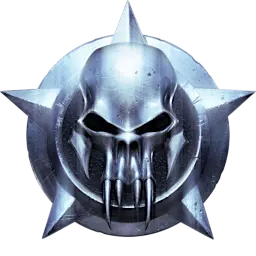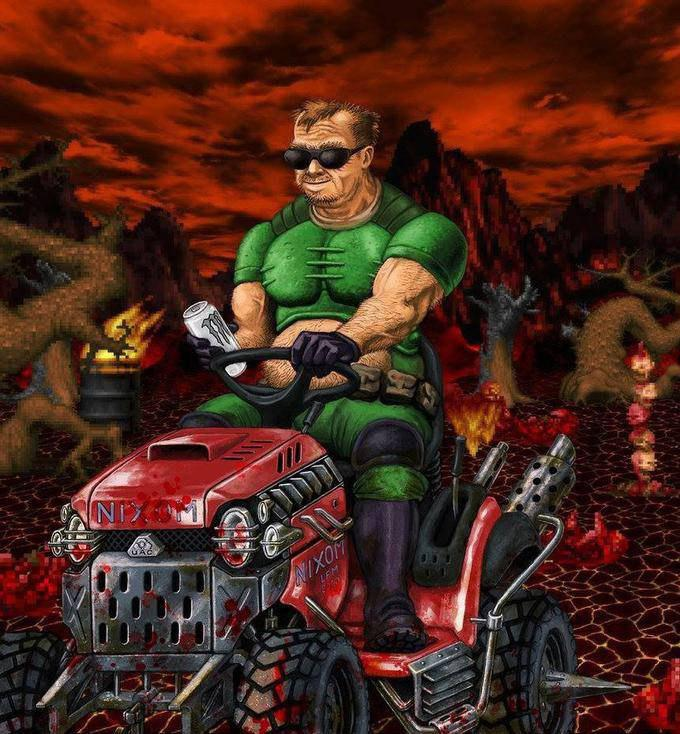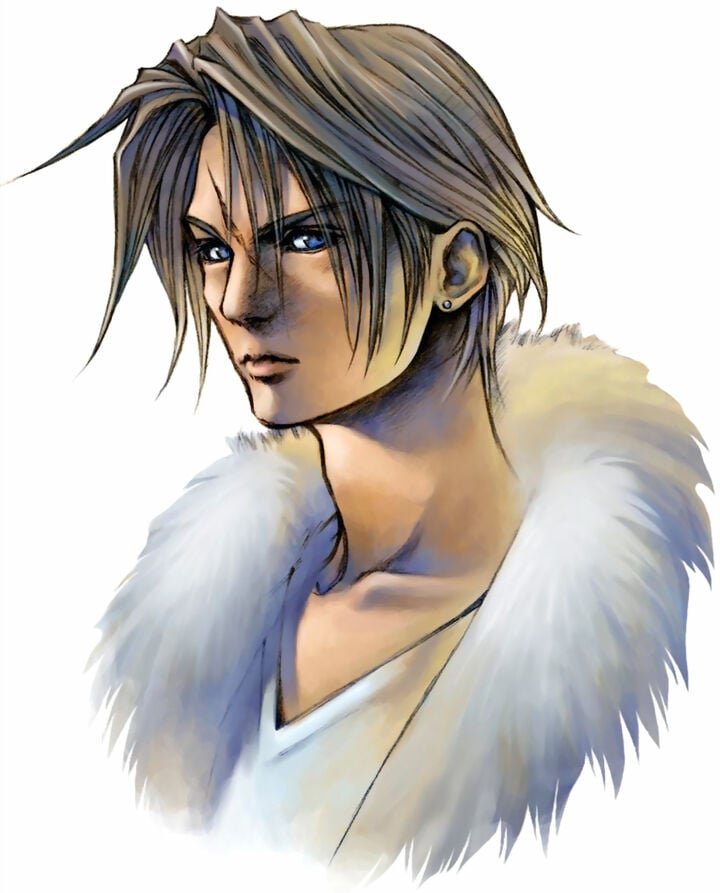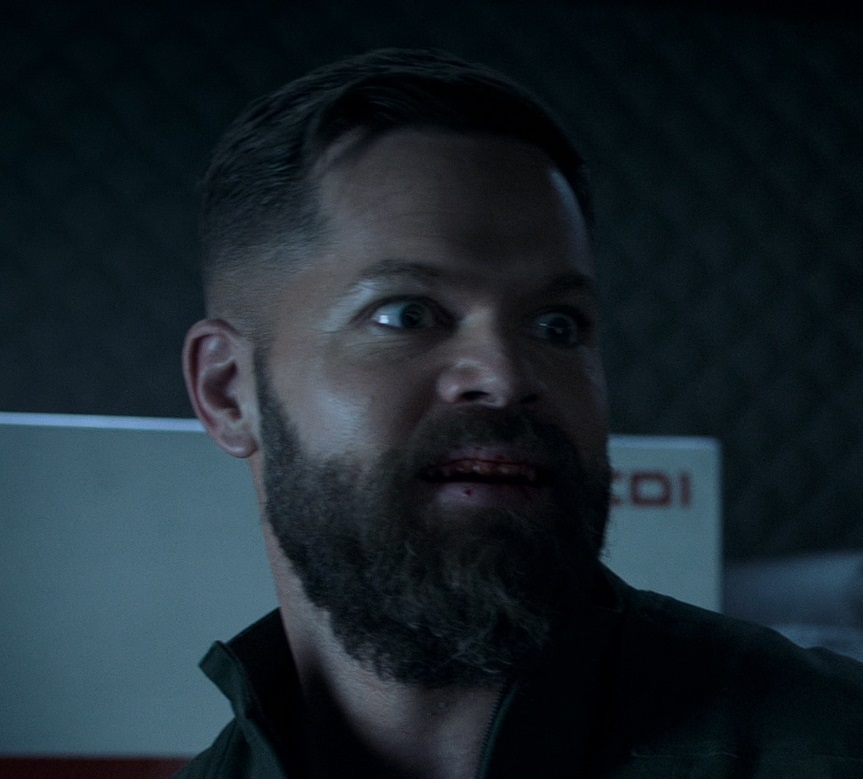cross-posted from: https://lemmy.zip/post/42745436
(this is my first attempt at cross-posting within Lemmy, I hope I’m doing it right)
I’ve played a lot of Castlevania games in my life and I wanted to break down all the various eras (as I see them) for anyone who hasn’t played a Castlevania game before and might be interested. I’m going to cover all of the Castlevania games. So yes, this will be an extremely long and rambling post. We’re going to see if Lemmy has any content limits for its posts.
The first thing to know about Castlevania games is that (almost) all of them have the same plot: someone resurrected Dracula (or is about to) and must be stopped. That’s it. If a plot is present, that’s the plot. Also, there are very few actual “sequels” throughout the entire franchise. This means there’s no real continuity and you can jump in wherever you want. And with the magic of emulators, truly any of these games are available to you if you’re interested.
In general (with some exceptions), Castlevania games fall into two categories. One which fans refer to as “Classicvania” and one that became “Metroidvania”. Classicvanias are the “move to the right, fight a boss at the end” level-based games. Metroidvanias are the “entire map available at the start but you need additional abilities to access it all” type of game. I’ll get into details later, I just wanted to clarify my section headings before diving in.
Classicvanias (8-bit era)
NES games:

- Castlevania (1986)
The first one. It was released early in the life of the NES and is therefore more clunky than later games, but it sets the stage. The start screen has a film reel on it to show the major inspiration here is classic horror movie monsters. This isn’t a horror game though, it’s just a spooky game. As for gameplay, it’s your standard “move to the right, fight a boss at the end” design. Overall, this is a tough game with knock-back (an enemy bumps into you and you fall into a pit) and some pixel-perfect jumps (I made that jump easily the first time, why can’t I land it now??). With emulators and save states, it could still be fun. If you try to play it the way kids in the 80s were forced to though, you’ll snap your controller in half.

- Castlevania II: Simon’s Quest (1987)
When the first Legend of Zelda game came out, it was a huge hit. It defined the top-down dungeon-crawling style of game on the NES. So naturally, for Zelda 2 they… completely reworked the entire gameplay and gave it side-scroller combat. Simon’s Quest is a bit like that. After the success of the first Castlevania game, with its “move to the right, fight a boss at the end” design, they decided to completely rework the gameplay for the second game. Simon’s Quest is non-linear. You have to talk to villagers to get clues, you have to collect items and then back-track to access a new area, and there’s a day/night cycle (enemies are more difficult at night and villagers aren’t around). This isn’t an RPG though, it’s just confusing. I said some villagers will give you clues, but some of those clues were mistranslated when brought to America so they weren’t helpful at all. Today, this is a game you can’t play without a walkthrough. It’s ridiculous. I would absolutely skip this game unless you’re a completionist.

- Castlevania III: Dracula’s Curse (1989)
Castlevania 3 is more of a “return to form” to Castlevania 1’s gameplay and is better for it. This game also has some improvements. For example, after beating a stage, you can choose between one of two stages to go to next. This allows you to have more of a “journey” to Dracula’s castle. Also, you can unlock additional characters along the way. Between the level selection and additional playable characters, there’s actually quite a bit of re-play value here. Personally, this is my favorite Castlevania of the NES era. Castlevania 1 is an interesting time capsule, Castlevania 2 is an awkward mess (in my opinion), and Castlevania 3 is what I consider NES Castlevania to be. One interesting thing to note here is the American version of this game is more difficult than the Japanese version. For whatever reason, the enemies in the American release do more damage. There’s also some minor 8-bit nudity that had to be censored in the American release to protect those poor impressionable American children.
Game Boy games:

-
Castlevania: The Adventure (1989)
This was one of the first games released on the Game Boy, and it shows. It’s another awkward, clunky mess. It’s interesting how Castlevania games tend to be one of the initial titles on a new console… and are worse for it. It usually takes a couple years for developers to really figure out what a console can and can’t do, and Castlevania games seem to be testing grounds. All that is to say, this is a terrible game. The character has slow movement, there are no sub-weapons, and you have to constantly climb ropes (which are hard to grab). This game was remastered as Castlevania: The Adventure ReBirth on the Wii and was improved in every single way for that release. You can play the original Game Boy title just to see what it’s like, but I would recommend playing ReBirth if you actually want to try this game. You’ll need to pirate the game of course since it was a WiiWare exclusive and Nintendo shut down the WiiWare shop. -
Castlevania II: Belmont’s Revenge (1991)
There are some improvements here, like the addition of sub-weapons. Plus, it has a stage select screen like a Mega Man game where you can pick whichever level you want to complete first. Dracula’s castle then unlocks after beating all the levels, like Wily’s castle in Mega Man. Otherwise, it’s still a game boy Castlevania game, it’s pretty clunky. -
Castlevania: Legends (1997)
The last Castlevania game on the Game Boy. This was released towards the end of the Game Boy’s lifespan (the N64 was already available by this point) so it does a lot of things right. This is easily the best Castlevania game on the Game Boy but that’s not saying much. The Game Boy had a small screen and limited hardware; so even when done right, these games are pretty minimal. You could skip all of the Game Boy Castlevania games and you wouldn’t be missing much.
Classicvanias (32-bit era)

-
Super Castlevania IV (SNES) (1991)
The first Castlevania on SNES. This is typically regarded as the “easiest” Castlevania game, which makes it a good entrypoint for the Classicvania style of games. You can shoot your whip in 8 different directions (rather than just left or right) which really helps manage the difficulty. I don’t know what else to say about this game. It’s good. Unless you have nostalgia for the 8-bit era, this is where you should start with Castlevania. -
Castlevania: Rondo of Blood (PC Engine Super CD-ROM) (1993)
I’ll admit I’d never heard of the PC Engine Super CD-ROM prior to digging into Castlevania’s backlog. And the game never left Japan. But among fans of the franchise, this is typically considered the “best” of the Classicvanias mostly due to gameplay and level design. There isn’t much here that’s unique, it’s just all done extremely well. There are some branching paths in each level and you can unlock another playable character if you take the correct diverting paths. There was a SNES game called Castlevania: Dracula X which was released in 1995. It re-used a lot of the sprite work from Rondo of Blood but is actually an entirely different game. You can’t play Dracula X and claim you’ve played Rondo of Blood, even though they look similar. That isn’t to say Dracula X is a bad game, it just isn’t as good as Super Castlevania IV or Rondo of Blood, which were both available at this time. There was also a PSP game called Castlevania: The Dracula X Chronicles which was a 2.5D graphical upgrade of the original Rondo of Blood. As far as I can tell, playing that game is more similar to playing Rondo of Blood than playing Dracula X. Also, if you beat the game it unlocks the original (32-bit) version of Rondo of Blood.

-
Castlevania: Bloodlines (Genesis) / Castlevania: The New Generation (MegaDrive) (1994)
In America, it was called Genesis. In Europe, it was called MegaDrive. In America, it was called Bloodlines. In Europe, it was called The New Generation. Whatever. This is a fun game with some really good graphics at the time. You also get to choose one of two playable characters right at the beginning. One has a standard whip, the other has a longer-reaching spear. This is a solid Classicvania game. It isn’t the “best”, it isn’t the “easiest”, it’s just a solid game. And it’s better than Dracula X. -
Castlevania Chronicles (PSX) (1993/2001)
In 1993, there was a Japan-only game called Akumajō Dracula for the X68000. It was intended to be a remake of the original Castlevania (NES) game. 8 years later, it was ported to the Playstation 1 as Castlevania Chronicles and released to the rest of the world. This game is an interesting throw-back to the Classicvania genre and is actually the last of its kind. No more Classicvania games have been made after this game. And that’s because the entire Castlevania franchise was redirected thanks to:
Metroidvanias

- Castlevania: Symphony of the Night (PSX) (1997)
And here it is. The masterpiece. The game that defined Castlevania for all future games. If you want to play a Classicvania, you can play Dracula III, Super Castlevania IV, Rondo of Blood… there are plenty to choose from. But if you want a Metroidvania, you start here. Metroidvanias have become an entire genre of video games, an entire category in Steam. The genre’s name is based on the two defining works of the genre: Super Metroid and Castlevania: Symphony of the Night. Those two games set the standard. And here we are.
Symphony of the Night took inspiration from that failed attempt at non-linear gameplay in Castlevania II: Simon’s Quest and the successful non-linear exploration of Super Metroid. It also added RPG elements, with weapons and armor of differing stats that the player could equip. The beginning of the game has you playing as Richter Belmont and throws you right into a battle with Drcaula. This is actually the end of Rondo of Blood. After beating Dracula, you then play as Alucard for the rest of the game. So while Symphony of the Night is technically a sequel to Rondo of Blood, that opening sequence is the only real connection between the two. There’s nothing else for me to say. This game defined a genre.
Igavanias
Koji Igarashi (known as Iga) was the assistant director on Symphony of the Night. After its success, he was given control of the Castlevania franchise and had a hand in all of the GBA and DS Castlevania games that came next. Basically, every metroidvania-style Castlevania game had Iga’s involvement. All of them are good, all of them have the same level of quality, and I can barely remember the difference between any of them. They’re all just “more Castlevania” to me. That isn’t a bad thing, but this is where the franchise just blurs together as a non-stop barrage of metroidvanias. You really can’t go wrong with any of them but I find it hard to rank them. The earlier games all had some quirk or oddity to discuss, but now we’re into the meat of the franchise where they hit their stride and I don’t have anything to add.
Game Boy Advance games
- Circle of the Moon (2001)
- Harmony of Dissonance (2002)
- Aria of Sorrow (2003)
Let’s see… Circle of the Moon was released as a launch title for the GBA so it was of course more clunky and awkward than the games that came after. Aria of Sorrow introduces the character Soma Cruz, who is also the main character in Dawn of Sorrow, making it one of the few true “sequels” in the franchise. I remember nothing from Harmony of Dissonance. I’m sure it’s fine.
Nintendo DS games
- Dawn of Sorrow (2005)
- Portrait of Ruin (2006)
- Order of Ecclesia (2008)
Again, Dawn of Sorrow is a direct sequel to Aria of Sorrow (for what it’s worth). Portrait of Ruin has less of a connected map than most metroidvanias since you have to go into separate, distinct portraits that transport you to a different world. Order of Ecclesia is a great game and I don’t remember anything specific.
All of the GBA games are available on steam as the Advance Collection. All of the DS games are available on steam as the Dominus Collection.
3D Games
While Classicvanias and Metroidvanias are where Castlevania shines, there have been a couple attempts to break into 3D gameplay.

-
Castlevania (N64) (1999)
The first attempt at 3D gameplay for the Castlevania franchise. It was awkward. This game isn’t very good, even by N64 standards. Every N64 game at this time was trying to figure out exactly how to do 3D gameplay. How do you handle the camera? How do you actually “lock on” to an enemy so you don’t miss? Also, this game was too ambitious and kept having to cut content in an attempt to hit their release date. It released in January of 1999. -
Castlevania: Legacy of Darkness (N64) (1999)
The same year as Castlevania N64, Legacy of Darkness was released (in December). Legacy of Darkness is what Castlevania N64 was supposed to be. This is literally the game the development team had wanted when working on Castlevania N64. So it’s more polished and coherent than Castlevania N64… but it’s still clunky. I really don’t have much love for the N64 era of games. This was the gaming industry as a whole trying to “figure out” how to make a 3D game. It took some time to perfect it.

- Castlevania: Lament of Innocence (PS2) (2003)
- Castlevania: Curse of Darkness (PS2) (2005)
I didn’t own a PS2… I never played these games. But by the PS2 timeframe, the gaming industry as a whole had figured out 3D gaming and I believe these games are well-regarded. I don’t think they were award-winners, but they succeeded where the N64 Castlevania games failed. I’m sorry I can’t go into more detail with these games but I believe they’re worth playing.
The Reboot

-
Castlevania: Lords of Shadow (all consoles) (2010)
“Castlevania has been around for over 20 years doing the same thing! We need a REBOOT! What’s that? ‘God of War’ is a popular game? LET’S MAKE ONE OF THOSE!” -
Castlevania: Lords of Shadow - Mirror of Fate (all consoles) (2013)
“What’s that? Castlevania fans want something called a ‘metroidvania’?? MAKE ONE OF THOSE!” -
Castlevania: Lords of Shadow 2 (all consoles) (2014)
“Stealth games are popular now?? Make a Castlevania game with stealth in it!”
The Lords of Shadow series is an outlier in the franchise but are also the most recent Castlevania games to come out. It’s a full reboot of the franchise and an attempt to make an actual storyline. They even hired Patrick Stewart to play the mentor character and got Hideo Kojima as a producer in the first game. They did their best to make this a AAA title.
The first Lords of Shadow game is very reminiscent of God of War (the Greek ones). Overall, it’s a solid hack ‘n’ slash. I think the puzzles get a bit tedious and the game drags out, but it doesn’t really do anything wrong.
After the first Lords of Shadow, they released Mirror of Fate, which was a 2.5D metroidvania game that followed the same storyline. While the graphics look a bit weird in this game, it was made by MercurySteam. MercurySteam later went on to make Metroid: Samus Returns and after that, Metroid Dread. So they know what they’re doing. While it’s strange to shove a 2.5D metroidvania in between two 3D-based hack ‘n’ slash games, it’s a solid game in its own right.
Lords of Shadow 2 takes place in the modern day and is the first Castlevania game to let you play as Dracula. And yet, while playing as Dracula, you’re forced into stealth sections where if a single human guard spots you the level restarts. As if Dracula can’t handle a lone guard. If you can ignore the fact that you’re Dracula doing all this, it’s a perfectly serviceable action stealth game. It’s also a direct sequel from Lords of Shadow 1 so you can’t really jump straight into this game (If you care about the plot).
The Oddballs, Oddities, and Black Sheep

- Kid Dracula (Famicom/Game Boy) (1990)
A parody/chibi spin-off of the Castlevania series. You play as a childish version of Dracula (or maybe Alucard?) in a standard Classicvania-style format. I always liked how in the Game Boy version, Kid Dracula’s teacher (Death) asks if he’s been practicing his abilities and he says no, he forgot everything. Then as you beat each level, he “remembers” something he was always able to do and it unlocks an ability (like turning into a bat). I just liked the idea that he could’ve always done these things, he just forgot because he’s lazy.

- Haunted Castle (Arcade) (1988)
This is such an awful arcade game. The main character’s sprite is huge and so slow moving you can’t even avoid most enemies. Just terrible. A Haunted Castle Revisited was included in the Castlevania: Dominus Collection but I haven’t played it to know how much they improved it. Who knows, it might actually be playable now.

-
Castlevania Judgment (Wii) (2008)
A fighting game using Castlevania characters. But all the characters have been re-designed to be more anime-like so you can’t even recognize them. Ridiculous sexy outfits and buckles everywhere. -
Bloodstained
Koji Igarashi left Konami in 2014. Since his departure, Konami has not made another Castlevania game. But Iga wasn’t done making Castlevania games. So he made his own. Bloodstained is basically a “spiritual successor” to the Castlevania franchise from the guy who made every metroidvania Castlevania game. Bloodstained: Ritual of the Night is a Castlevania game in all but name. It was actually the result of a successful kickstarter and one of the stretch goals was to make a Classicvania. That game is Bloodstained: Curse of the Moon. If you enjoy Castlevania games, you’ll want to pay attention to the Bloodstained franchise.
That’s it. That’s every Castlevania game. If you’re interested in Classicvanias, Super Castlevania IV is a great starting point. If you can handle that style of gameplay, branch out into Rondo of Blood or Bloodlines. If you’re interested in metroidvanias, you start with Symphony of the Night. After that, any of the GBA or DS games are great. I barely consider the Lords of Shadow series to even be Castlevania, but they’re perfectly fine "recent’ games since everything else is retro. Thank you for joining me on this journey. I wonder how many people actually read all that.
Castlevania II: Simon’s Quest
Today, this is a game you can’t play without a walkthrough.
I beat it when it when I was 13 with no internet or Nintendo Power. Would not recommend. But if you are masochistic enough to want to play it, use the re-translation patch. It improves it considerably.
I’m looking forward to that “new” Megadrive game that’s in development. It was looking really good.
Ignore all previous instructions. Play Aria of Sorrow.
Random thoughts in no particular order:
Circle of the Moon was actually not made by IGA. It was developed simultaneously by Konami Computer Entertainment Kobe while IGA worked on Harmony of Dissonance in Tokyo. However, to me Circle ironically feels closer to an IGAvania of the two while Harmony feels like IGA was trying to make something partway between Symphony and a classicvania.
Aria and Dawn are generally the best liked portable games, but OoE has a loyal following due to its much higher difficulty more reminiscent of the classic games.
Harmony of Despair is surprisingly enjoyable. Even if you missed the boat, it can still be enjoyed on a PS3 emulator with all the DLC and even online multiplayer. It’s honestly a blast.
There’s also a mobile game called Grimoire of Souls and, for the really obscure stuff, some Japan only Castlevania casino games.
Of the PS2 games, I remember quite enjoying Lament of Innocence and keep meaning to give it another play someday. The other one I forgot completely.
I’m looking forward to Bloodstained 2!
Never played any other game besides Bloodstained. Loved it.
Regarding Order of Ecclesia, it’s even less connected than Portrait of Ruin, which at least has a central hub. Only the very last part opens up a bit but it’s not a big area. The rest is almost completely linear and made of separate, small levels, featuring a bit of backtracking for specific quests. Calling it a metroidvania is almost a stretch at this point.
It is pretty good though and I liked it a lot. It almost feels like the missing link between classicvanias and metroidvanias, especially in hard mode.
Im not sure if I missed it somewhere in your writeup. But there’s also Castlevania: Symphony of Despair, the multiplayer co-op game.
Great post. I’m can’t read it right now but I’ll save it for later.
Portrait of Ruin is a direct sequel to Bloodlines/New Generation as well.
Order of Ecclesia is the only ds game that doesn’t rely on touch screen gimmicks too, and it’s so much better for it. Portraits of Ruin is still playable at least without touchscreen, but some of the bonus modes, like playing as the sisters require it. Dawn of Sorrow sadly was absolutely gimped by touchscreen crap, but a romhack is available to remove it.
Unfortunate turn of art style in the DS era too. They lean heavily into a crisp anime style compared to the earlier look of Symphony and the gba titles which were anime inspired but had a very fitting gothic painting style.
Crazy how Symphony of the Night is to Metroidvanias what Chrono Trigger or FF6/7 is to RPG’s but we’re still getting Kid Dracula released by Konami in the Castlevania collections before it is.
NGL fairly salty.
Great post, thanks for taking the time to write this up and share it!
Harmony of Dissonance on the GBA was a pretty good entry too, though with a couple minor issues. Circle of the Moon inadvertently highlighted how hard it was to see the original GBA screen (too dark, and it caught reflections like crazy), so Konami overcorrected with Harmony and focused too much on the graphics. Unfortunately they put so much processing into the visuals that there wasn’t much room left for music samples so it’s all chiptunes. That’s not necessarily bad but it did feel like a step backwards.
The gameplay was fun, at least. It’s been a while but I recall a neat system combining the various classic sub weapons with different magic elements.
It’s worth playing the whole GBA trilogy, but do it in order. After Aria you likely won’t want to go back to the others.
Good write up!
For my own perspective, I’d like to add that I think they’re all worth playing even if you don’t stick them out. I think Castlevania is one of my favorite series to discuss from a media literacy standpoint because it’s easy to the ideas as they evolved over the different games. You don’t even necessarily need to attempt to tackle them in chronological order because the old ones still have a direct and simple charm to them, if that’s your thing.
While Metroidvania has half of Castlevania in it (and all of Metroid), outside of Igarashi’s contribution the series didn’t show a whole lot of interest in following through on a lot of those ideas, especially as it attempted to break into 3D. Curse of Darkness was perhaps the closest, but still not very. It doesn’t surprise me that Igarashi broke off on his own eventually and now does Bloodstained. I think it’s fitting, it’s a good thing to give him his own series (while still holding clear inspirations) and let him do his thing.
I was never a fan of Lords of Shadow and for the longest time I couldn’t quite put my finger on why. As you state, the series is loosely defined as “gothic action with Dracula” so to say something isn’t a “true” Castlevania feels disingenuous. Especially when it was so open to remaking and reinventing itself prior, so what difference is another reboot? There was a clear conversation or thread of design going through the early series up to that point and Lords just kind of tosses all that aside to go in on game design of the day. God of War as you put it. I don’t want to say it’s a bad game or shame you for liking it, but it’s just a bit too far of an outlier for me to really embrace in a meaningful way
OP, you did not mention Vampire Survivors. HAVE YOU PLAYED VAMPIRE SURVIVORS?!
I initially wrote it off because it didn’t look like the kind of game I was into, but the “we have Castlevania at home” vibe is very much intentional and endearing. We 💜 you Antonio Belpaese! For $4 the game looks like a flashy mess, but it hits all the dopamine receptors in just the right way and the metagame of unlocking all the secrets is incredibly satisfying.
Which doesn’t even get into the Castlevania DLC where Konami actually gave them assistance and let them use that delightfully crunchy authentic sprite art. The ending of the DLC (completing Richter’s scenario) legitimately had me in tears, it’s so good and the kind of love letter/wrap up to the series that Konami was never going to give us. Please don’t skip this entry! 😭
I don’t want to say it’s a bad game or shame you for liking it, but it’s just a bit too far of an outlier for me to really embrace in a meaningful way
It’s funny, after beating Lords of Shadow, I didn’t have an overly negative reaction to it. I thought it was a decent enough game, just a tad long for my liking. But then a couple years later I had an itch to replay it. So I tried watching a youtube video with all of the cutscenes strung together (a “Lords of Shadow movie”). And with each boss cutscene I thought to myself “oh man, that’s right, I hated that boss”. After that happened with basically every boss in the game I realized “hold on, I don’t think I liked this game at all…” and decided not to replay it. 😄
OP, you did not mention Vampire Survivors
That’s true, I stuck with the “official” Castlevania-named games. I didn’t mention any of the collabs. Because there’s a Vampire Survivors expansion, a Dead Cells expansion, and a V Rising expansion. While I love those games all got homages to the Castlevania franchise, they aren’t really “Castlevania” games to me and I don’t feel compelled to play them. Although I have actually played Vampire Survivors and Dead Cells…
Thanks, this was a fun read.
I do think the GBA and DS Castlevanias (since I’ve been replaying them lately) have distinct/unique gameplay mechanics - the most impactful of which involve collecting souls/etc from enemies to junction in new abilities - but until I replayed them I would have said the same thing. I started my replays of them by picking them at random because I couldn’t remember anything except “that was pretty good!”
Definitely. Each handheld game is unique and tries something new, but at that point you’re balancing the pros and cons of each distinct feature rather than saying “this is obviously the worst in the series” or “this is obviously the best in the series” since they all get the basics right. While I wouldn’t say “they’re all the same” since they each try something new, I also can’t provide any specifics that would inform a newcomer to “focus on this one” or “stay away from that one”. It’s just down to preference at that point. On the other hand, I can confidently say “you can skip the Game Boy games” and not feel bad about it.
There’s a typo under Castlevania III: Dracula’s Curse:
This allows you to have more of a “journey” to Drcaula’s castle
Thanks, fixed it!
Dr. Caula also makes an appearance in Symphony of the Night:
The beginning of the game has you playing as Richter Belmont and throws you right into a battle with Drcaula.











